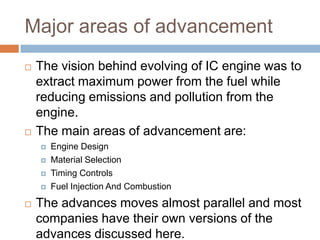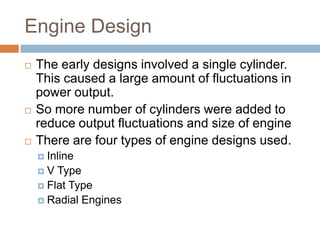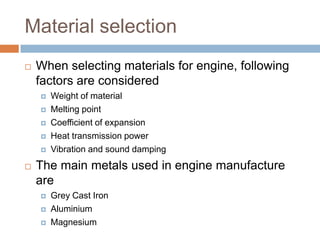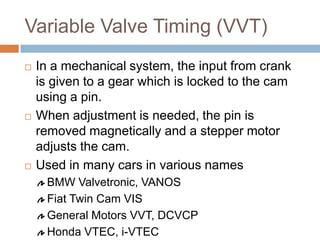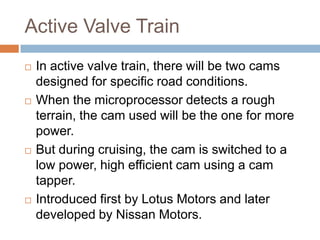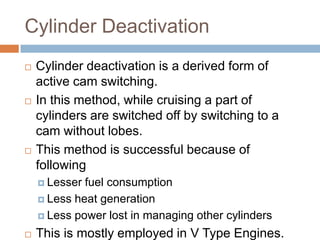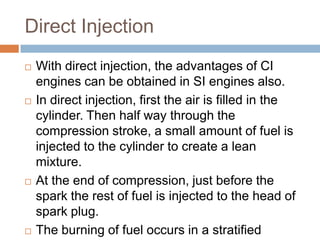This document discusses advances in internal combustion engines. It begins by introducing IC engines and classifying them based on combustion and strokes. Major areas of advancement discussed include engine design, material selection, timing controls, fuel injection, and combustion. Specific technologies covered are variable valve timing, active valve trains, cylinder deactivation, direct injection, superchargers, turbochargers, and six-stroke engines.
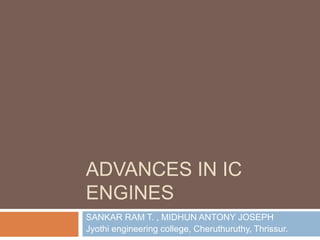

![Classification of IC engines
Two main classifications:
Based on combustion
Spark Ignition [SI engines] (Eg: Petrol Engine)
Compression Ignition [CI engines] (Eg: Diesel
Engine)
Based on Number of strokes
Two stroke
Four Stroke
Six Stroke](https://image.slidesharecdn.com/advancesinicengines-120325133435-phpapp02/85/Advances-in-ic-engines-3-320.jpg)
